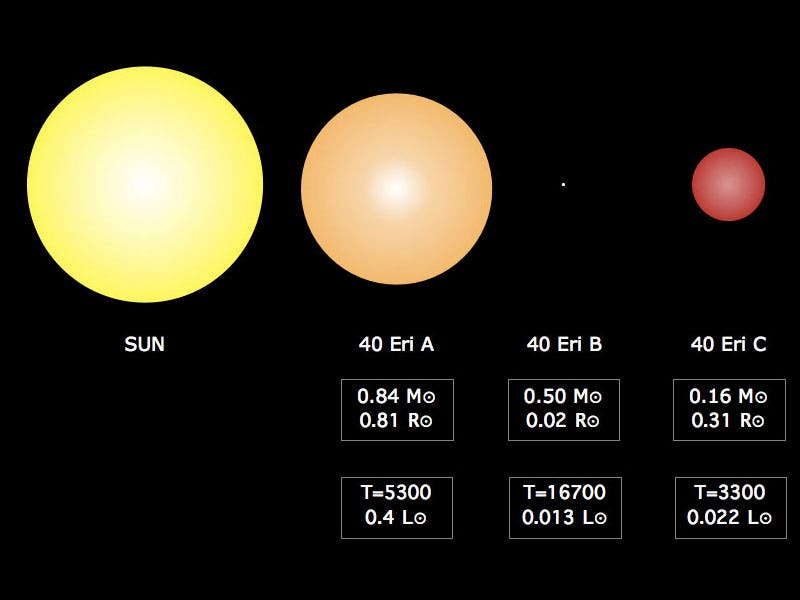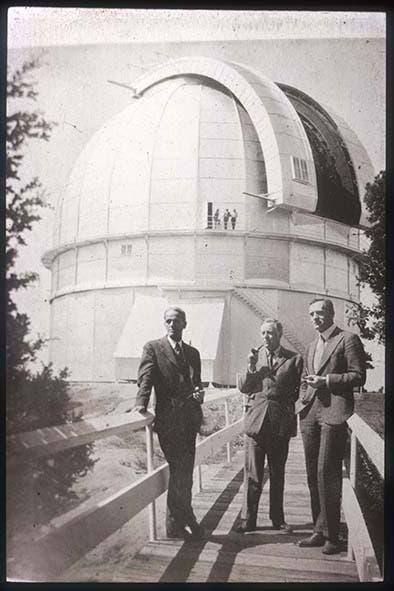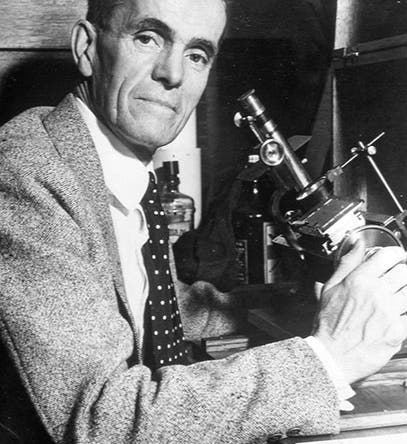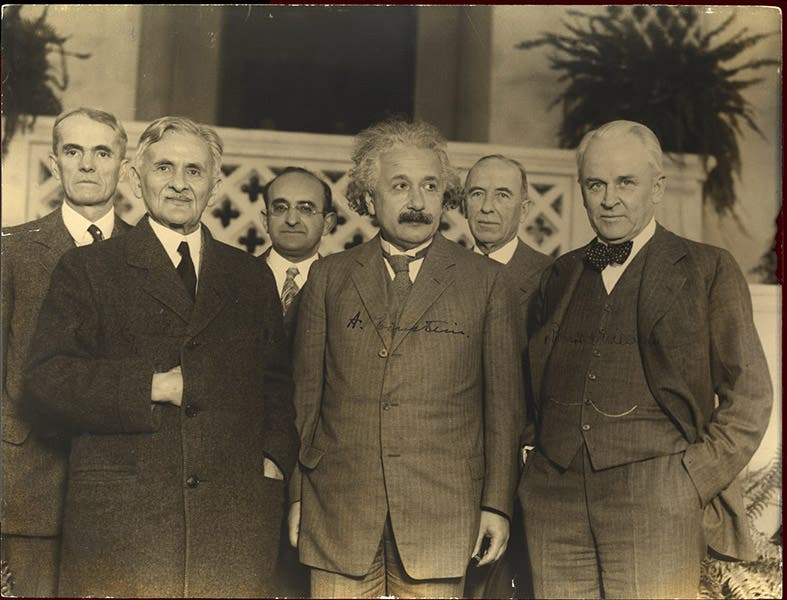Scientist of the Day - Walter Sydney Adams
Walter Sydney Adams, an American astronomer, was born Dec. 20, 1876. In 1862, a tiny companion to the bright star Sirius had been discovered. Somewhat later, a similar dim star had been discovered near the star 40 Eridanus. Both Sirius B and 40 Eri B, as they were called, were puzzling, since they had luminosities that were only about 1/10,000 of their bright companions. A modern diagram comparing 40 Eri B with its companions demonstrates the extreme difference in brightness (second image).

Diagram comparing the relative sizes of the stars 40 Eri A, B, and the Sun (starobserver.eu, webpage now defunct)
When the spectral type of stars was first worked out near the end of the century, and the letters OBAFGKM were assigned to stars to represent their spectral type (our sun being a G star, for example), it was determined that K and M stars were generally red, cool, and dim, while B and A stars were hot, white, and very luminous. In 1914, Adams announced that 40 Eri B was an "A" star, which meant it was hot and white, but it was not very luminous at all, and then in 1915 he captured a spectrum of Sirius B which revealed that it too was an "A" star. Adams had discovered the first two "white dwarfs", although the term was not invented until 1922.
Adams’ important papers of 1914 and 1915 appeared in the Publications of the Astronomical of the Pacific. I would ordinarily show you one or both papers, but our run of this journal is incomplete, missing the decade of the 1910s. This doesn’t happen very often, but it does happen, which is why we need a network of research libraries, and not just one national library.

Walter Sydney Adams, James Hopwood Jeans, and Edwin Hubble (left to right) in front of the dome of the 100-inch Mount Wilson telescope, photograph, 1932 (star.arm.ac.uk, webpage now defunct)
In 1925, Adams got an even better spectrum of Sirius B and discovered that the spectral lines were "red-shifted" a small amount. Usually, a red shift is caused by a star’s motion away from us, but Albert Einstein had recently predicted, in his theory of general relativity of 1916, that an intense gravitational field, such as one might find around a very dense star, would also cause a red shift. Adam's discovery of the gravitational red shift of Sirius B is one of the three famous confirmations of Einstein’s general relativity that were made between 1919 and 1925.
Adams became Director of the Mount Wilson Observatory in 1923 and held that position until 1946. Hence, he had the privilege of showing visiting dignitaries the sights, as when James Jeans dropped in from England in 1932, and Adams and Edwin Hubble posed with their visitor in front of the dome of the 100-inch reflector (third image, above). When Albert Einstein came by in 1931, the portrait was more formal. Adams is at the far left; Albert Michelson and Robert Millikan flank Einstein in the front row (fourth image, just above).
Adams was apparently a gentleman who was easy to work with and for. An insight into his character comes from his interactions with Immanuel Velikovsky, author of Worlds in Collision (1950), a book that proposed that Venus had once been a comet and that its fly-by of Earth, before settling into orbit, caused many of the events described in the Old Testament. Velikovsky was severely criticized and ostracized by most of the astronomical community, who argued that Velikovsky’s physics was impossible nonsense (which it was). But when Velikovsky wrote to Adams in the 1940s with a question about planetary orbits, Adams replied courteously, and when the book was published and Velikovsky sent him a copy, Adams actually read the book (unlike most of his colleagues) and responded very civilly. He praised Velikovsky’s classical scholarship (much of the evidence of the book came from a study of ancient mythology), and while he left no doubt that he was unpersuaded by the astronomical physics of Velikovsky’s argument, Adams was polite and professional in his treatment of the Russian-Jewish scholar, which made him unique among his professional peers. I never had much use for Velikovsky, whom I read in my youth, but when I encountered Adams’ letters, I was filled with admiration for Adams’ courtesy and his adherence to the ethos of civil discourse.
This is a revision of a post that first appeared on Dec. 20, 2016. One image has been added, captions have been included for all four images, and the final paragraph is new.
Dr. William B. Ashworth, Jr., Consultant for the History of Science, Linda Hall Library and Associate Professor emeritus, Department of History, University of Missouri-Kansas City. Comments or corrections are welcome; please direct to ashworthw@umkc.edu.







